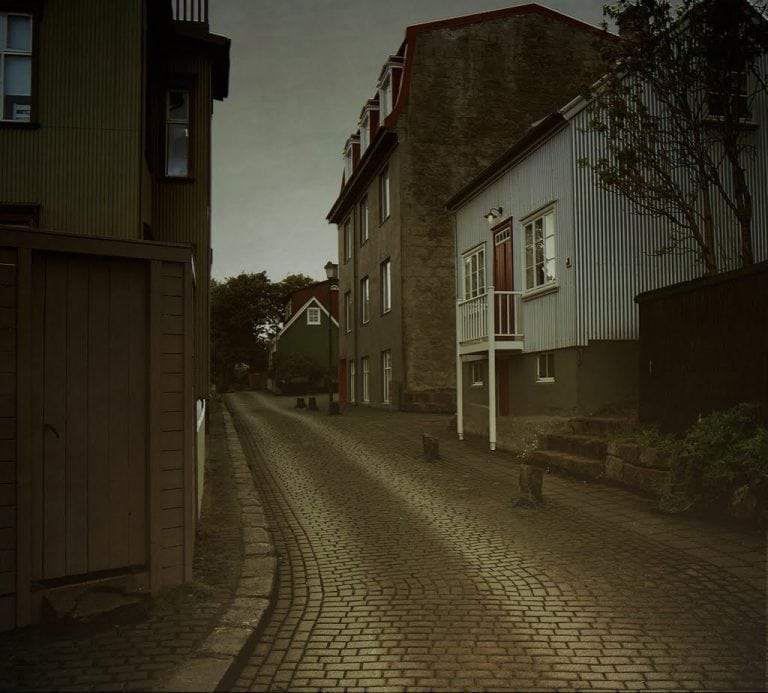Grjótaþorp (Grjóti village) is where Reykjavík began, when buildings were constructed on Aðalstræti (Main Street) as workshops for the lnnrettingar, Iceland’s first industrial enterprise, for wool-working and other crafts. Aðalstræti 10 was built in 1762 as office and residence for the manager. Aðalstræti 16 originates from this time, built as a woollens workshop in 1753.
The first wooden houses in Reykjavík were all of similar type (known as “Danish”). The walls were low, and the roof high and steeply pitched. The exterior was clad in tarred timber. The lnnrettingar led to growing commerce and fishing in Reykjavík . New social groups, merchants and landless work ers, were allocated plots from the property of Grjóti, a farm that stood at the top of the hill behind the workshop.
The oldest building in this part of Grjótaþorp are Mjóstræti 8 (1852), Aðalstræti 2 (1855) and Fischerssund 3 (The Norwegian Bakery), built 1876. In the period 1880-1905, a number of homes in Reykjavík were built of cut basalt; among them were so-called “stone farmhouses,” which were similar to the traditional turf houses. An example is Hábær, Garðastræti 11A, built in 1886.


